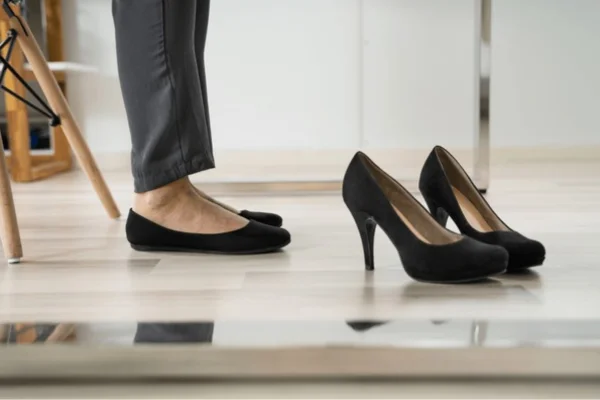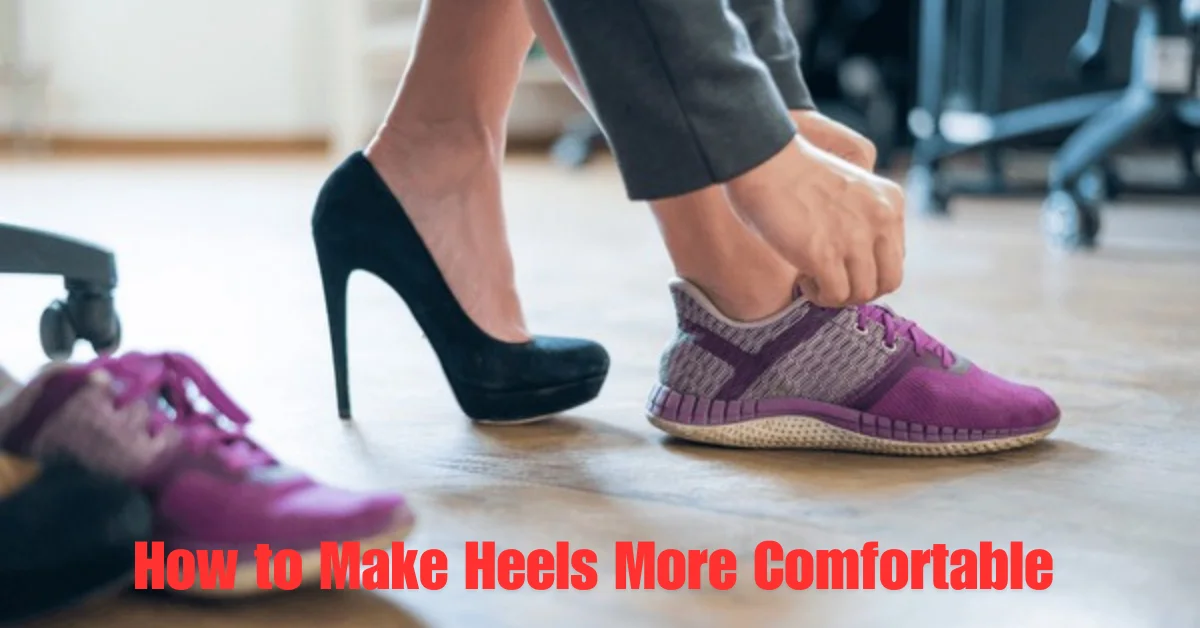High heels are a staple in many wardrobes, adding a touch of elegance and confidence to any outfit. But let’s be honest—heels can also be a source of discomfort. Whether you’re wearing them to work, a party, or a special event, the pain can sometimes outweigh the style. But it doesn’t have to be that way! With a few simple tips and tricks, you can make your heels more comfortable and enjoy wearing them without the agony.
Wearing high heels can feel like balancing on a tightrope. The pressure on the balls of your feet, the cramped toes, and the awkward posture—all contribute to that dreaded discomfort. But why do heels hurt so much? It’s not just about the height. The lack of support, the angle of your feet, and the impact on your posture all play a role in making heels a pain to wear. Understanding the root cause of this discomfort is the first step toward finding solutions.
Choosing the Right Size and Fit
A well-fitting pair of heels is like finding a needle in a haystack, but it’s worth the effort. If your heels are too tight, they’ll pinch and cause blisters. If they’re too loose, your feet will slide forward, increasing the pressure on your toes. The key is to find a size that fits snugly without being restrictive. Make sure to try on heels at the end of the day when your feet are slightly swollen, as this will give you a better idea of how they’ll fit during extended wear.
Opt for a Lower Heel

Not all heels are created equal. A lower heel (around 2-3 inches) can make a significant difference in comfort. The higher the heel, the more pressure on the balls of your feet, leading to pain and discomfort. Lower heels provide better balance and reduce the strain on your feet. If you can’t resist a higher heel, consider one with a platform at the front to balance out the height difference.
Consider the Shape of the Toe Box
The shape of the toe box—the front part of the shoe where your toes sit—can greatly affect comfort. Pointed-toe heels may look chic, but they can squeeze your toes and cause pain. Instead, opt for a rounded or almond-shaped toe box, which gives your toes more room to spread out. This simple change can prevent blisters, corns, and other foot issues caused by cramped toes.
Use Cushioned Insoles
Cushioned insoles are a game-changer when it comes to making heels more comfortable. They provide extra padding where you need it most, reducing the pressure on your feet and absorbing shock as you walk. Look for insoles made from gel or foam, which mold to the shape of your feet for personalized comfort. You can find insoles specifically designed for high heels, which are thinner and fit better in tight spaces.
Break in Your Heels Gradually
Breaking in a new pair of heels is like taming a wild horse—it takes time and patience. Start by wearing them around the house for short periods, gradually increasing the time you spend in them. This will allow the material to stretch and mold to the shape of your feet, reducing the likelihood of blisters and discomfort. You can also use a shoe stretcher or apply heat to the tight areas to speed up the process.
Pay Attention to the Heel Material
The material of the heel can impact both comfort and durability. Stiffer materials like patent leather may look stylish, but they can also be unforgiving on your feet. Softer materials like suede or leather conform to your foot’s shape more easily and are generally more comfortable. Additionally, the material of the sole matters—rubber soles provide better grip and cushioning compared to hard leather soles.
Stretch Your Feet Regularly
Wearing heels can tighten the muscles in your feet, leading to cramps and discomfort. Stretching your feet regularly can help alleviate this tension and keep your feet flexible. Simple stretches like rolling a tennis ball under your foot, stretching your toes, or flexing your ankles can make a big difference. Make it a habit to stretch before and after wearing heels to keep your feet in top shape.
Use Heel Grips or Inserts
Heel grips or inserts are small pads that stick to the inside of your shoe, providing extra cushioning and preventing your feet from sliding forward. They can also help fill in any gaps if your heels are slightly too big. These grips come in various shapes and sizes, so you can choose the ones that work best for your shoes. They’re an inexpensive and effective way to make your heels more comfortable.
Maintain Good Posture While Walking
Walking in heels requires a different posture than walking in flats. To maintain balance and reduce strain on your feet, engage your core muscles and keep your back straight. Imagine a string pulling you up from the top of your head, aligning your spine. Take smaller steps and land on your heels before rolling onto the balls of your feet. Practicing good posture not only makes walking in heels more comfortable but also enhances your overall appearance.
Take Breaks and Give Your Feet a Rest
Even with all the tips and tricks, wearing heels for extended periods can still take a toll on your feet. Whenever possible, take breaks to sit down and rest your feet. If you’re at a party or event, don’t be shy about slipping off your heels under the table or during breaks. Alternating between sitting and standing can prevent your feet from becoming too fatigued and reduce the risk of long-term damage.
Choose Heels with Ankle Support
Heels with ankle straps or support can make a significant difference in comfort. The additional support around the ankle helps stabilize your foot and prevent it from sliding forward. This reduces the pressure on the balls of your feet and makes walking easier. Ankle support is especially important if you’re wearing heels for an extended period or walking on uneven surfaces.
Consider Gel Pads for Extra Cushioning
Gel pads are another excellent option for adding comfort to your heels. These pads provide targeted cushioning where you need it most, such as under the balls of your feet or around the heel area. They’re easy to insert and can be removed or adjusted as needed. Gel pads are especially helpful if you have sensitive feet or are prone to blisters.
Rotate Your Footwear
Wearing the same pair of heels every day can lead to foot fatigue and discomfort. To avoid this, try rotating your footwear throughout the week. Alternate between heels, flats, and more supportive shoes to give your feet a break. This not only helps prevent discomfort but also prolongs the life of your shoes.
Conclusion
Making heels more comfortable is not just about choosing the right pair—it’s about taking care of your feet and knowing how to wear them properly. By understanding the factors that contribute to discomfort and applying these tips, you can enjoy wearing heels without the pain. Remember, comfort doesn’t have to come at the expense of style. With a little effort and the right strategies, you can have the best of both worlds.
FAQs
How can I prevent blisters when wearing heels?
To prevent blisters, make sure your heels fit properly, break them in gradually, and use cushioned insoles or blister pads. Also, consider using heel grips to prevent your feet from sliding.
Is it possible to make high heels comfortable for long periods?
Yes, by choosing the right size, using cushioned insoles, and taking breaks, you can make high heels more comfortable for extended wear. Lower heels or platforms can also help.
What are the best materials for comfortable heels?
Soft materials like leather or suede are more comfortable as they conform to your foot’s shape. Rubber soles provide better cushioning and grip than hard leather soles.
Can I stretch out tight heels at home?
Yes, you can stretch tight heels by wearing thick socks and walking around in them at home, using a shoe stretcher, or applying heat to the tight areas.
How do I maintain good posture while walking in heels?
Engage your core, keep your back straight, and take smaller steps. Land on your heels first and roll onto the balls of your feet to maintain balance and reduce strain.

